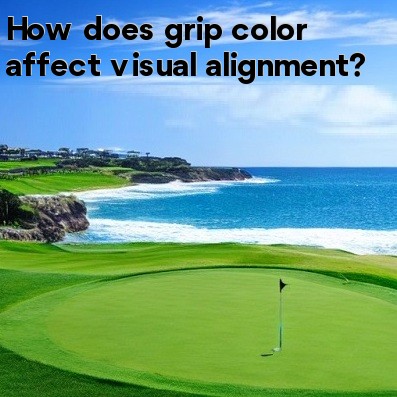
In golf, How does grip color affect visual alignment?
When it comes to golf, every little detail can make a difference in your game. One factor that many golfers overlook is the color of their grip. The color of your grip can actually have an impact on your visual alignment, which in turn can affect your swing and overall performance on the golf course.
Visual alignment is crucial in golf because it helps you position your body and club correctly in relation to your target. When your alignment is off, it can lead to misjudging distances, inconsistent shots, and missed opportunities for improvement. The grip color plays a role in visual alignment because it can either enhance or detract from your ability to properly align yourself.
A darker grip color, such as black or dark blue, can add contrast against a bright background, such as the grass or sky. This contrast can help you focus on your grip and the positioning of your hands, making it easier to align your clubface and body correctly. When your grip color stands out against the background, it can serve as a visual reference point, guiding your eyes and helping you maintain proper alignment throughout your swing.
On the other hand, a lighter grip color, such as white or light gray, can blend in with the surroundings and make it more challenging to visualize your grip and alignment. Without a clear reference point, you may struggle to consistently position your hands and clubface, leading to inconsistencies in your swing. This lack of contrast can also make it more difficult to see subtle grip adjustments, such as slight twists or changes in hand positioning, which can impact your shot direction.
Additionally, some golfers find that grip colors with certain undertones can affect their perception of alignment. For example, a grip with a warm undertone, like a reddish or orange hue, may create a sense of right-to-left ball flight, while a grip with a cool undertone, such as a bluish or greenish hue, may create a sense of left-to-right ball flight. These perceptual biases can influence how you align yourself and how you swing the club, even if it's not a conscious decision.
It's important to note that individual preferences and personal visual acuity can also play a role in how grip color affects alignment. Some golfers may find that a specific grip color enhances their alignment, while others may not notice a significant difference. Experimenting with different grip colors and seeking feedback from a golf professional can help you determine what works best for you.
In conclusion, the color of your golf grip can impact your visual alignment on the golf course. A darker grip color can provide contrast and serve as a clear reference point, making it easier to align your clubface and body correctly. On the other hand, a lighter grip color may blend in with the surroundings and make it more challenging to visualize your grip and alignment. Additionally, grip colors with specific undertones can create perceptual biases that influence your alignment and swing. Ultimately, finding the right grip color for your individual needs and preferences can help you improve your game and achieve better results on the golf course.





